The contact area of the ankle is basically the whole tibial plafond surface, but it is extended slightly by weightbearing. Axial loading forces are mainly borne by the plafond and amount to 5x body weight in the late stance phase of gait.
Tibiotalar incongruity reduces contact area and increases localised loading in the remaining contact area.
There is an often-quoted paper (Ramsey and Hamilton 1967, confirmed by Lloyd et al 2006) which showed that 1mm of lateral talar displacement reduced contact area by 40%.
However, this was achieved by removing the normal stabilising structures and physically holding the talus laterally. As we saw above, in the presence of an intact deep deltoid ligament, axial loading pushes the talus into a position of congruence and maintains normal contact characteristics.
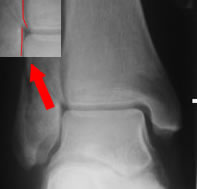
As a result of misunderstanding the work of Yablon and Ramsey and Hamilton, surgeons sometimes view fractures like this, with a small fibular displacement, as if they represent ...
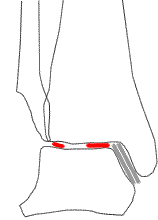
...this model, with talar incongruence and reduced contact area
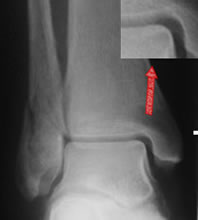
...when in fact the congruent mortise shows they represent...
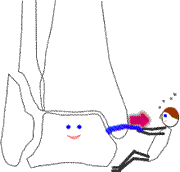
...this model, in which the intact deep deltoid check-rein keeps the talus in place
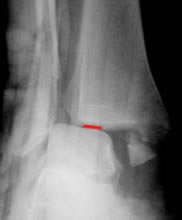
However, highly-unstable trimalleolar fracture patterns, with an effective deltoid ligament division and major talar migration, can reduce contact area and increase loading by up to 40% in vitro. These injuries aren't very common but they crop up, and are very challenging to treat.
